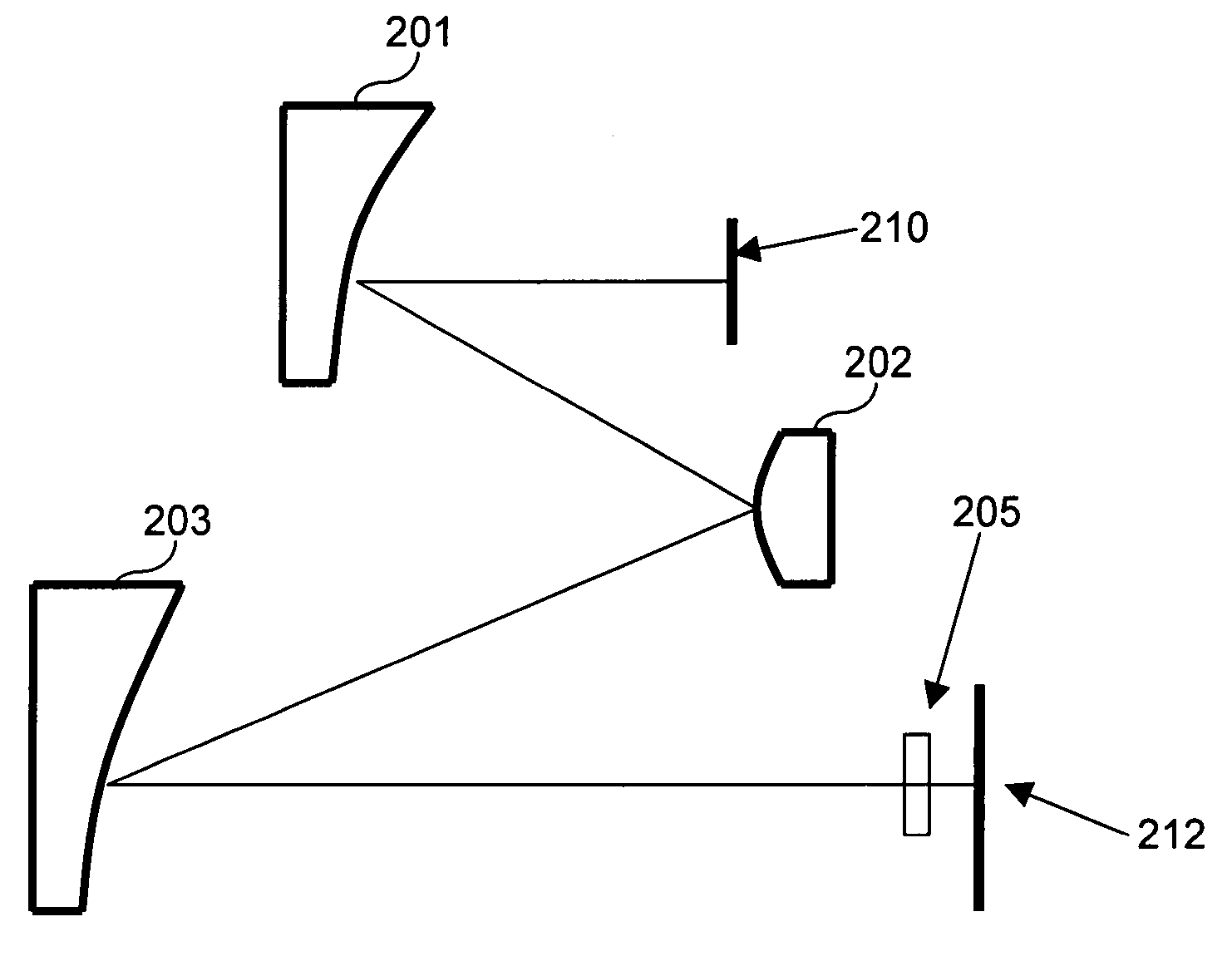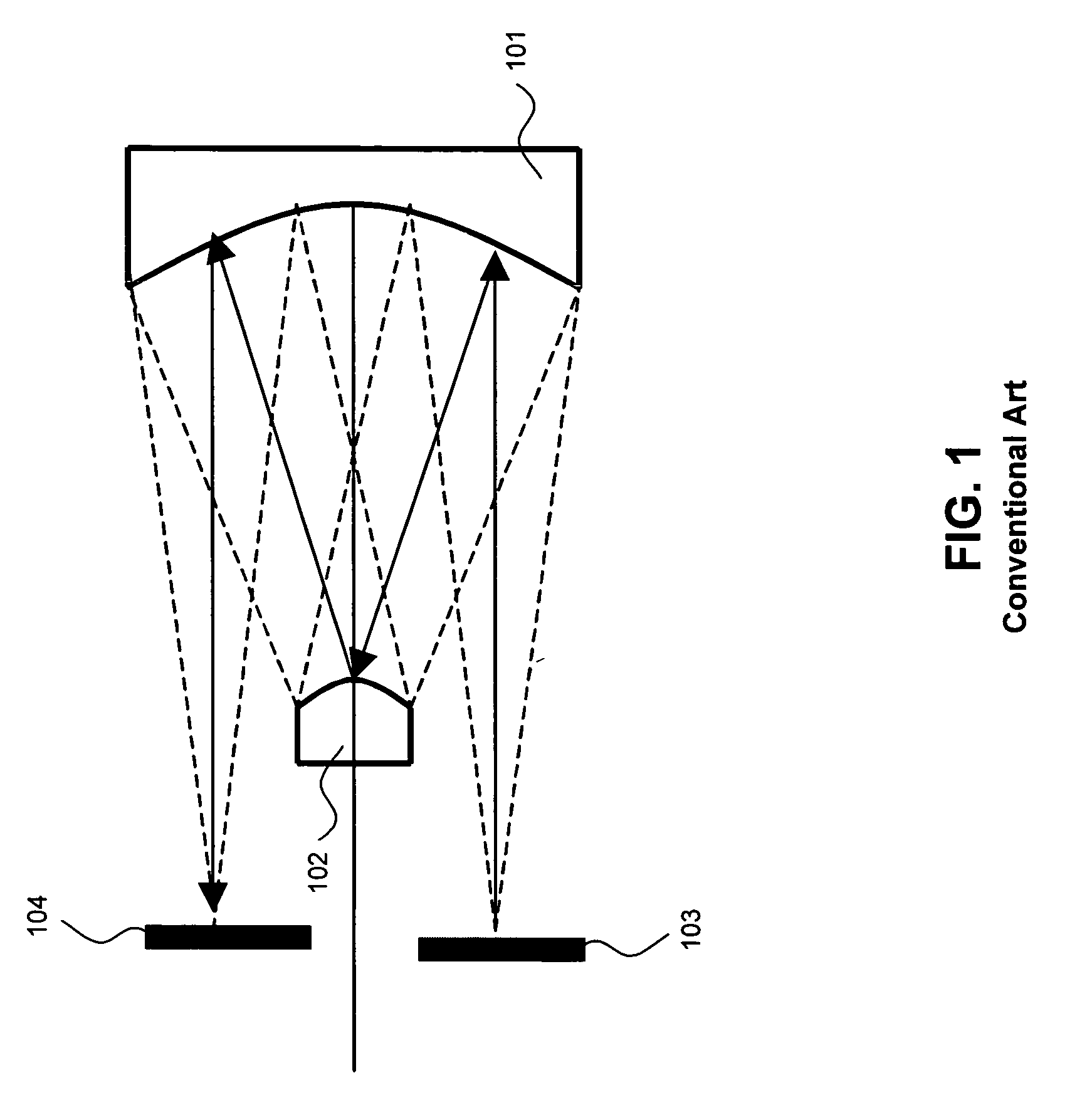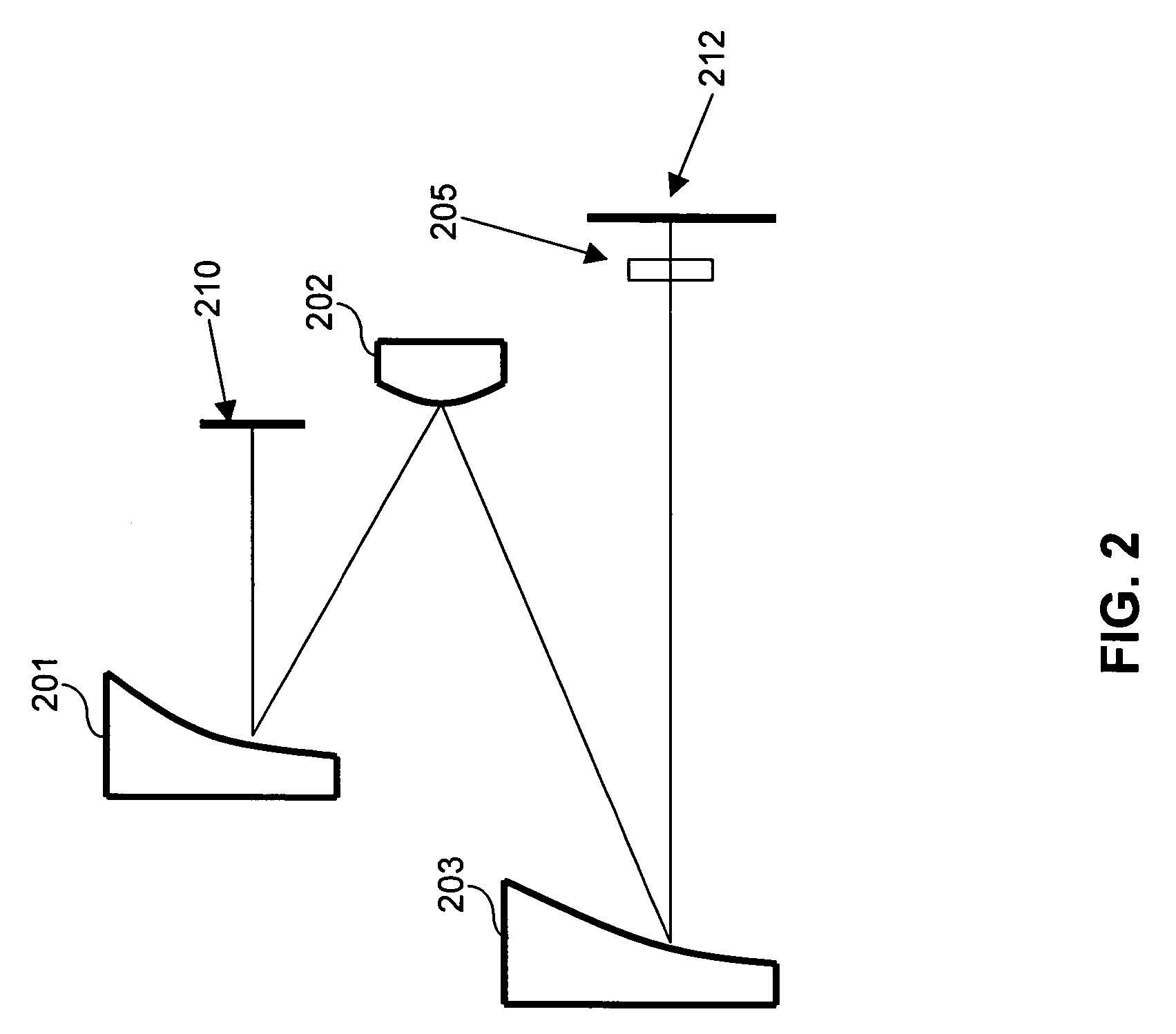Large field of view 2X magnification projection optical system for FPD manufacture
- Summary
- Abstract
- Description
- Claims
- Application Information
AI Technical Summary
Benefits of technology
Problems solved by technology
Method used
Image
Examples
example 1
[0095] A four mirror ringfield optical design form with a refractive corrector plate is proposed, shown in FIG. 3, for printing Generation 6 FPDs and beyond that operates at magnifications consistent with mask substrate sizes from Generation 5 (32 inches) and Generation 4 (about 22 inches). In particular, a nominally 2× optical design would enable FPD manufacture up to about 60 inches in size to be produced using a 32-inch Generation 5 mask substrate. An example of the 2× optical system is a 42-inch Generation 6 FPD being printed using a 21-inch diagonal mask pattern that is written on a 32-inch diagonal mask substrate. Table 1 shows the sizes of the Generation 6, 7 and 8 mask patterns with a 2× system relative to the size of a Generation 5 substrate.
TABLE 1Mask Pattern Sizes For Generation 6, 7 and 8 FPDs With 2XProjection OpticsFPDGenerationMask Size For 2XDiag-Actual Screen SizeProjection OpticsNum-onalHorizontalVerticalHorizontalVerticalber(in)(in)(in)(in)(in)Comments53227.815...
example 2
[0103] A three-mirror exemplary ringfield optical design form with a refractive corrector plate, shown in FIG. 2, can be used for printing Generation 6 FPDs and beyond, that operates at magnifications consistent with mask substrate sizes for Generation 5 and 4. In particular, a nominally 2× optical design with mirrors 201-203 enables FPDs up to about 60-inches in size to be produced using a 32-inch Generation 5 mask substrate.
[0104] The 2× optical design form of FIG. 2 utilizes three powered mirrors 201, 202, 203, which are all off-axis aspheres in the baseline design. A corrector plate 204, which is located near the image plane, has two flat surfaces (radii of curvature equal to infinity), but one surface has an aspheric curve that is designed to correct distortion. The thickness of the corrector plate 204 is chosen based upon the amount of astigmatism to be corrected. The exact radii of curvatures, aspheric coefficients and spacings for the mirrors 201, 202, 203 depend on the sli...
example 3
[0109] An exemplary four-mirror ringfield optical design form, shown in FIG. 7, is proposed for Generation 6 and beyond that operates at magnifications consistent with mask substrate sizes from Generation 5 and 4. In particular, a nominally 2× optical design would enable FPDs up to about 60-inches in size to be produced using a 32-inch Generation 5 mask substrate.
[0110] The 2× optical design form of FIG. 7 utilizes four powered mirrors 701-704, three of which are off-axis aspheres in the baseline design. The exact radii of curvatures, aspheric coefficients and spacings for the mirror depend on the slit width operation requirements.
[0111] Table 4 compares the baseline performance to the nominal optical specifications required to produce FPDs of acceptable quality and at an acceptable production rate for Generation 6.
TABLE 4Optical Performance Of Four Mirror 2X DesignBackSlitWorkingDepthOverlayMagnificationWavelengthWidthDistanceResolutionOf FocusDistortionControlBandwidth(mm)(mm)...
PUM
 Login to View More
Login to View More Abstract
Description
Claims
Application Information
 Login to View More
Login to View More - R&D
- Intellectual Property
- Life Sciences
- Materials
- Tech Scout
- Unparalleled Data Quality
- Higher Quality Content
- 60% Fewer Hallucinations
Browse by: Latest US Patents, China's latest patents, Technical Efficacy Thesaurus, Application Domain, Technology Topic, Popular Technical Reports.
© 2025 PatSnap. All rights reserved.Legal|Privacy policy|Modern Slavery Act Transparency Statement|Sitemap|About US| Contact US: help@patsnap.com



